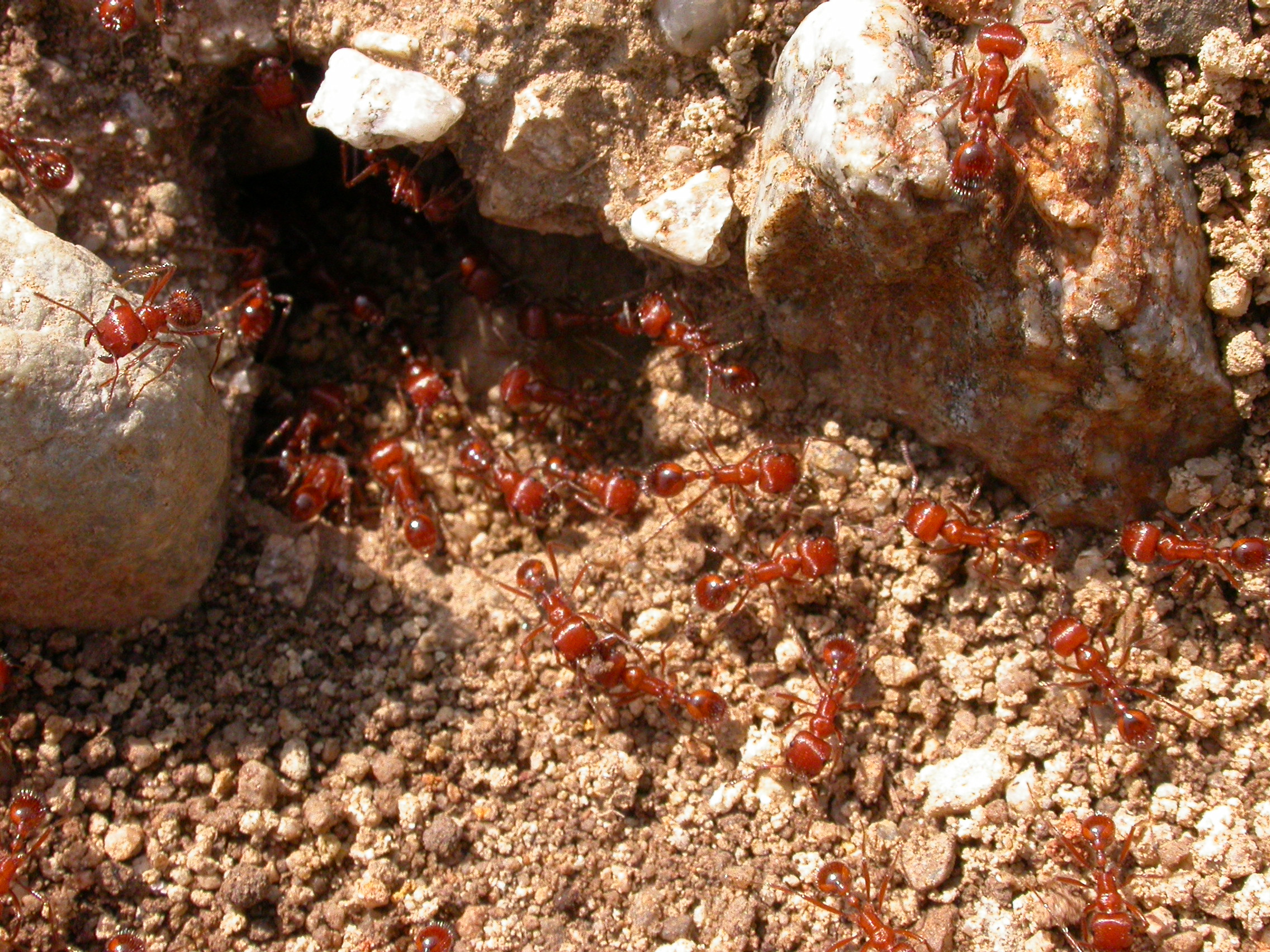Reproduction
The California harvester ant exhibits specific behaviors to
achieve high reproductive success. Male ants within the genus
Pogonomyrmex assemble in large groups on the ground, on
low shrubs, and around tall objects such as trees and chimneys, and
they can remain sexually active for quite a few days (Mintzer 1982).
Mintzer also noted that volatile secretions are released from
the mandibular glands, causing females and other males to fly
upward to the aggregation sites in his 1982 article. Most often,
females copulate several times with different males, one after
another, in June and early July when temperatures exceed 30
degrees Celsius - perfect conditions for mating flights to help
increase colony size (Mintzer 1982).
Colonies of Pogonomyrmex californicus are founded
without workers by at least one queen and grow to have thousands
of workers at maturity, all of which are of one form (Holbrook
et al. 2011). Though single queens found nests in most
P. californicus populations, there is a localized
population in San Diego County, California, that displays what
is known as pleometrosis, which is the event of colony founding
through multiple queens; it is the only known occurrence of this
phenomenon (Johnson 2004). Pleometrosis allows the colony to
speed through its early growth stages, increasing colony
survival and enabling earlier production of sexual offspring
(Johnson 2004).

Primarily, multiple
queen populations arise through
haplometrosis, or colony founding by one queen, and when a
California harvester ant colony is well-established, the
secondary queens can enter the nest (Navajo Nature 2010).
According to the same website, multiple queens do not exist
indefinitely, however; during the late stages of a colony’s
founding, the queens will fight each other to have control over
the nest. P.
californicus workers may also start to kill individual
queens (Navajo Nature 2010). Either way, the consequence is that
only one queen will receive complete control over egg-laying in the colony.
Multiple queens must gather resources to raise their offspring
by exposing themselves to risks caused by foraging, just as
single queens must in order to raise their first offspring; thus, they are known as obligate foragers
(Navajo Nature 2010).
Queens forage for only a short time before they revert back to
large-scale egg production in the nest, and their ovaries’
functionality is kept during foraging (Dolezal et al.
2012). Workers, on
the other hand, are no longer able to produce healthy eggs when
they begin to forage, and their ovaries slowly begin to decay
most probably because of reduced ovarian activity and
ecdysteroid levels (Dolezal et al.
2012).
Go back to the Form and Function page Go to the Home page Go on to the Interactions page